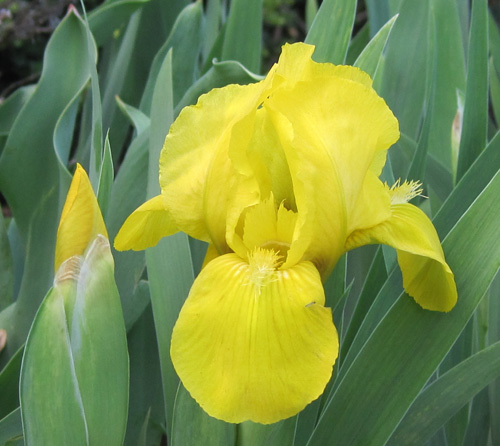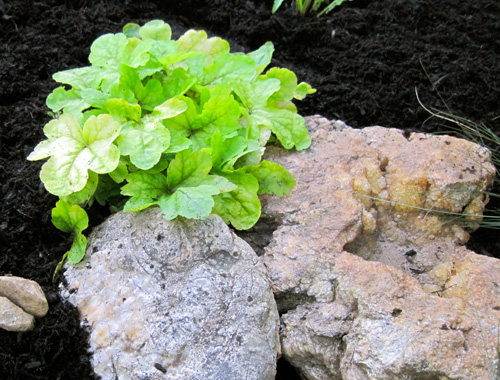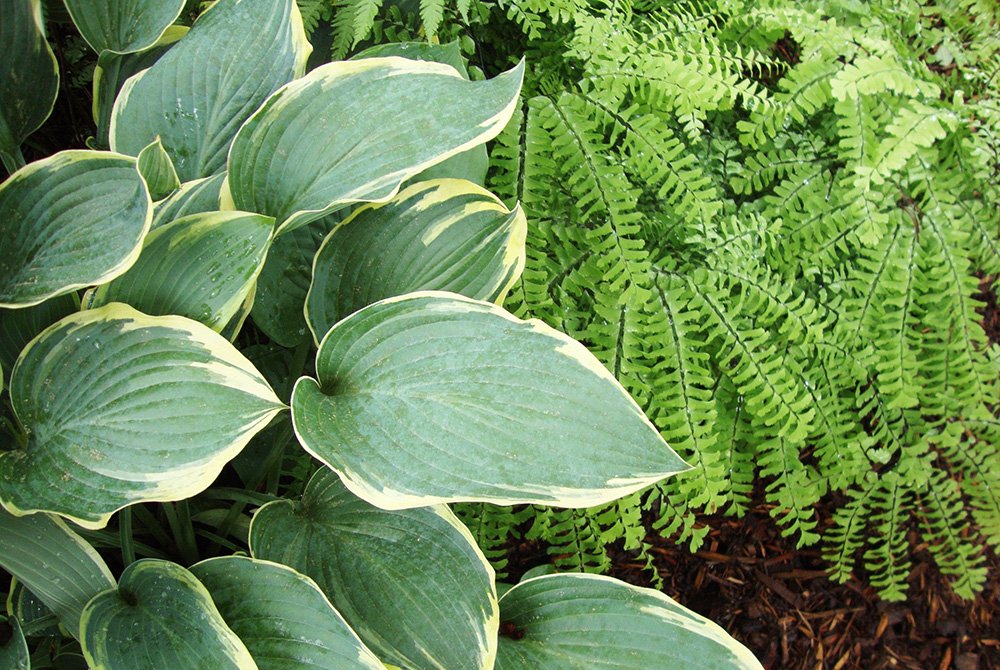Creating a Jewelbox Entry Garden
/Entry gardens are a challenge to design because they need to be interesting in all seasons. But they also provide a wonderful opportunity to showcase tiny interesting specimens that would be lost in a distant landscape.
We were delighted when our friend Deborah asked for assistance in designing a new entry garden for her suburban home. In addition to new foundation plantings, Deborah needed help with a small entry garden bed that is the focal point of her front yard.
The entry bed is a highly visible triangle bordered by the driveway, the walkway to the front door, and a winding brick path that Deborah installed herself. Mounded in the center, it has good drainage and dappled sunlight for most of the day. Deborah likes Asian-inspired gardens, and wanted to incorporate her ‘Crimson Queen’ Japanese maple, creeping phlox, hostas, and an unusual collection of geodes inherited from her grandfather.
Above, Deborah’s previous garden had included mostly sun-loving perennials that bloomed briefly and then blended into a mass of green. We wanted to give her garden interest throughout the seasons with fabulous colored foliage, different textures and a variety of plant forms.
Because the garden is so highly visible at close range, we came up with the concept of creating a “jewelbox” entry garden – a collection of small specimen plants with intricate details that delight the eye upon close inspection.
We decided to incorporate plants that would evoke an Asian garden. We chose a color scheme of yellows and maroons to complement Deborah’s house colors. And we came up with the concept of a large tufa trough that would serve as a focal point for the bed and unite several groupings of geologic specimens.
Hypertufa troughs look like stone, but are actually made of peat moss, perlite and Portland cement, so they are much lighter than they appear. Ours is filled with hens and chicks, mini hostas and a miniature carex.
Small objects in a garden, like these geodes, are more effective when grouped.
Although newly planted, the new garden already has interest from the variety of forms.
Our plant palette consists of spiky plants such as daylilies, dwarf iris, and blue fescue; low creeping plants such as sedum ‘Angelina’, creeping wooly thyme and Irish moss; large-leaved plants such as hostas and coral bells; and feathery plants such as Japanese painted fern and miniature conifers. As the plants mature, they will create a complex tapestry of colors and shapes.
Shades of maroon from the Japanese maple, red fountain grass, heuchera ‘Stormy Seas’ and the winter color of bergenia complement the home's brick façade and maroon shutters and doors.
Glimmers of gold from hosta ‘Great Expectations’, hanoke ‘All Gold’, heucherella ‘Sunspot’, yellow dwarf iris, and ‘Happy Returns’ daylilies echo the creamy yellow siding.
Four season interest will begin with miniature conifers and hellebores in winter; snowdrops, mini daffodils, creeping phlox, epimediums and bergenia in spring; alliums, irises, Astilbe ‘Key West’ and daylilies in summer; and hanoke grass, blue fescue, black mondo grass and ground-hugging sedums in fall.
Unusual miniatures include alpine lady’s mantle, carex ‘Beatlemania, and mini hostas ‘Stilleto’. 'Kii Hime', 'GinkoCraig', ‘Lakeside Cha Cha Downsized’ and 'Lakeside Baby Face'.
The jewelbox garden is grounded by a simple foundation planting of ‘Green Lustre’ hollies, hydrangea ‘Quickfire’ astilbes and epimediums, along with a hosta hedge that was already on the property.
You Might Also Like

























